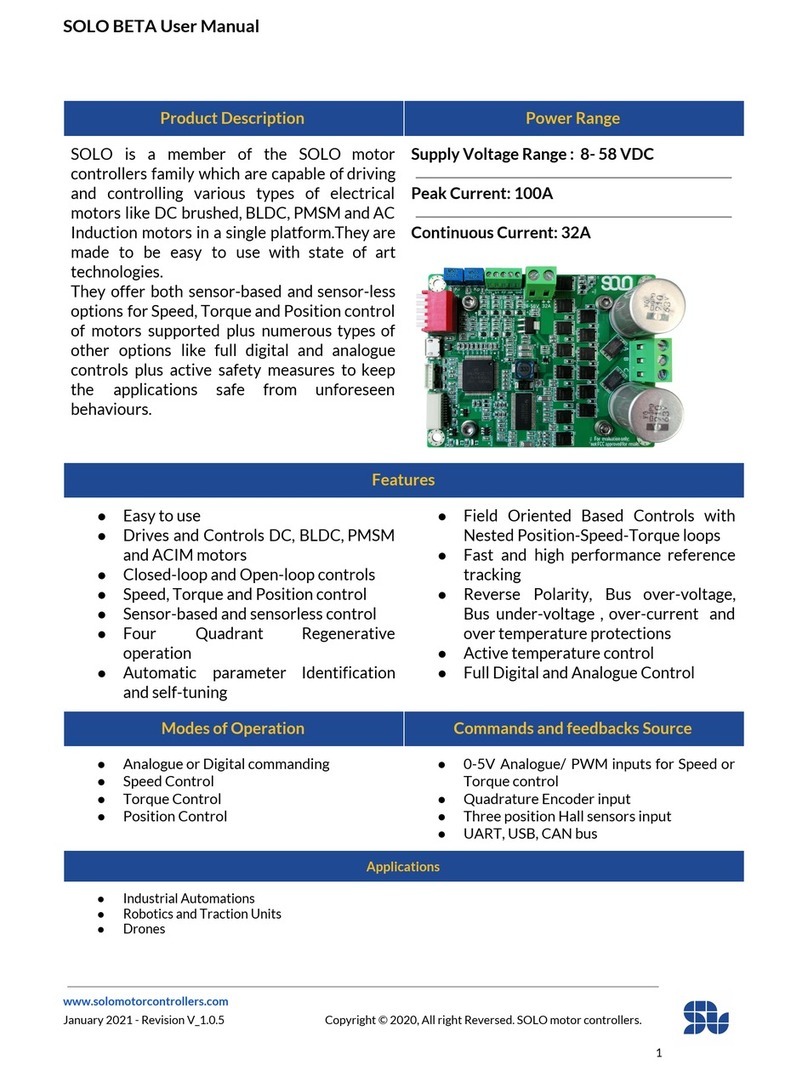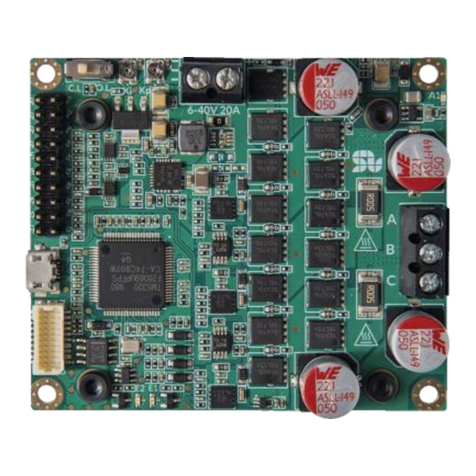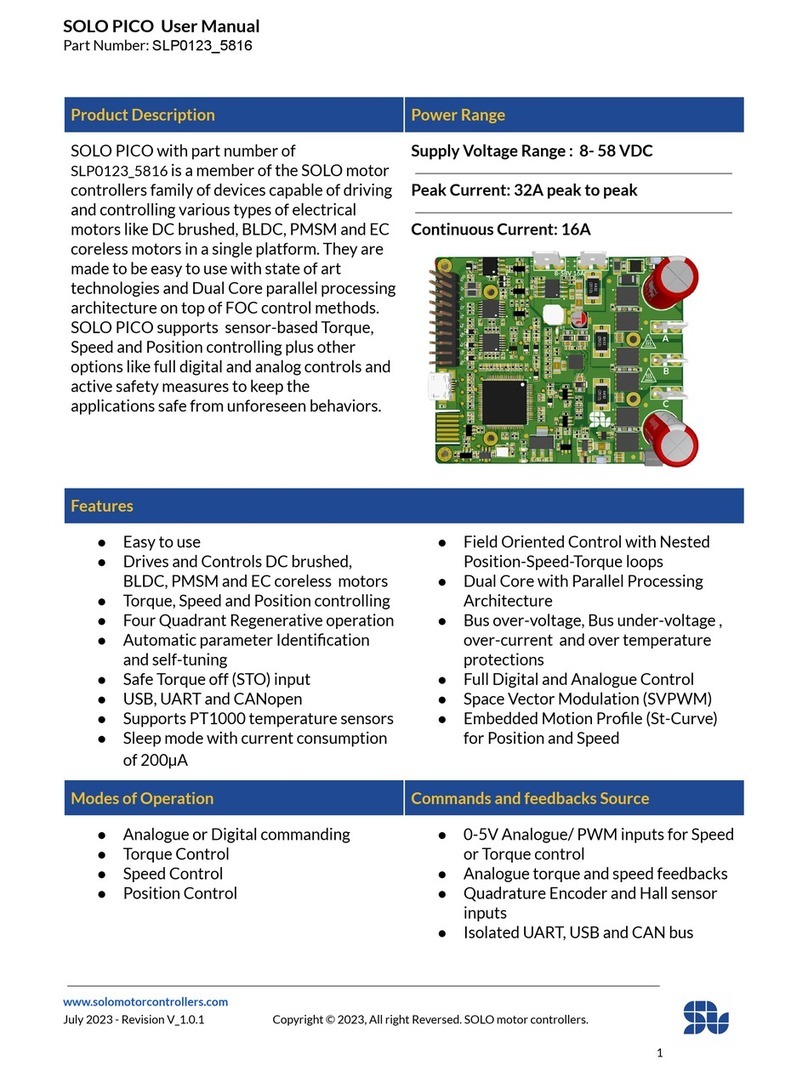SOLO Communication Manual - UART and USB
www.solomotorcontrollers.com
September 2021 - Revision V_1.0.1 Copyright © 2021, All right Reversed. SOLO motor controllers.
4
0x10 : Incremental Encoder’s Lines 27
0x11 : Speed Limit 27
0x12 : Reset the device address to zero 27
0x13 : Feedback Control Mode 28
0x14 : Reset Factory 28
0x15 : Motor Type 29
0x16 : Control Mode Type 30
0x17 : Current Controller Kp Gain (Torque controller) 30
0x18 : Current Controller Ki Gain (Torque controller) 31
0x19 : Monitoring Modes Enable/Disable 32
0x1A : Magnetizing Current Reference (Id) 33
0x1B : Position Reference 33
0x1C : Position Controller Kp Gain 34
0x1D : Position Controller Ki Gain 34
0x1F : Reset Position to Zero (Home) 34
0x20 : Overwrite the Errors 35
0x21 : Sensorless Observer Gain for Normal BLDC-PMSM Motors 36
0x22 : Sensorless Observer Gain for Ultra-fast BLDC-PMSM Motors 36
0x23 : Sensorless Observer Gain for DC Brushed Motors 37
0x24 : Sensorless Observer Filter Gain for Normal BLDC-PMSM Motors 37
0x25 : Sensorless Observer Filter Gain for Ultra Fast BLDC-PMSM Motors 38
0x26 : UART Baud-Rate 38
0x27 : Encoder or Hall Sensors Calibration Start/Stop 39
0x28 : Per-Unit Encoder or Hall sensor Counter Clockwise offset 39
0x29 : Per-Unit Encoder or Hall sensor Clockwise offset 40
0x2A : Speed Acceleration Value 40
0x2B : Speed Deceleration Value 41
0x2C : CAN Bus Baud Rate 42
Read Commands: 43
0x81 : Device Address 43
0x82 : Phase-A voltage 43
0x83 : Phase-B voltage 43
0x84 : Phase-A Current 44
0x85 : Phase-B Current 44
0x86 : BUS Voltage (Input Supply / Battery) 44
0x87 : DC Motor Current (IM) 45
0x88 : DC Motor Voltage (VM) 45






























